Led an end-to-end member payment portal overhaul, boosting FCR by 41%.
Company: Florida Blue
Back to home page | View all portfolio items
Company function: Florida state’s largest health insurer.
Company type: Large enterprise
Company website: https://www.floridablue.com/
My roles: UX product designer | Co-usability researcher
Team involved: 2 interaction designers | 2 visual designers | 1 user researcher
Tools: Invisionapp | Figma | Miro
Duration: 6 months
Key contributions: User research & usability testing | Concept creation & ideation | Wireframing & prototyping | Interaction & experience design
Member impacted: Over 10 million
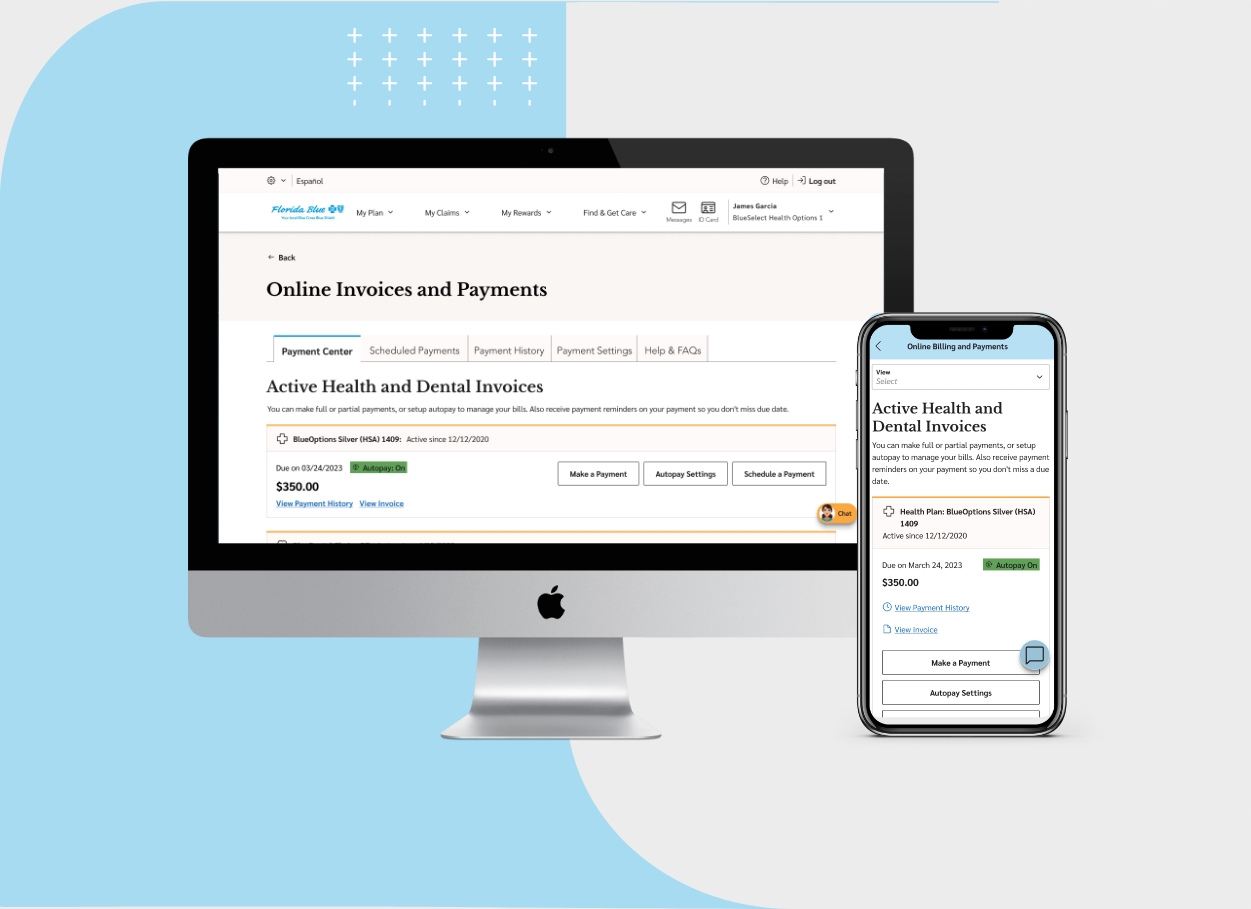
Project Overview
Pain Points: Members faced a slow-loading mobile and web portal, frequently timed out, and forced them into two separate login flows, one for health bills and another for dental. Without the ability to pay both in a single checkout, users struggled to see a unified balance, misunderstood confusing line-item statements, and received no automated email or SMS reminders. As a result, nearly 60% of users abandoned payments mid-flow, deadlines were routinely missed, and support calls spiked.
Goals & Objectives Overview: Our mission was threefold: boost First Contact Resolution (FCR), reduce support call volume, and deliver a truly self-service payment experience. Crucially, members needed a single, cohesive workflow that let them authenticate once, view combined health & dental experience, and enhanced payments success rate on portal.
Process: We began with a heuristic audit to catalog major usability barriers, then ran 3 ideation workshops with product managers, stakeholders, developers, and leadership to prioritize features (combined payment, clear billing breakdown, payment settings, and reminder system). I mapped out end-to-end user flows, produced interactive wireframes in Figma, and validated designs through 1:1 moderated sessions (35 members) and unmoderated A/B tests (116 members). Each iteration refined error messaging, streamlined input fields, and optimized mobile responsiveness.
My Role & Impact: As lead UX designer, I owned information architecture, prototype development, and test facilitation. Partnering closely with product leaders, project managers, developers, and UX researchers, I ensured alignment on requirements, payment logic, and user needs throughout agile sprints. This collaborative approach powered our October 2023 launch. Within six months, FCR climbed 41% year-over-year, average call handling time dropped, and our NPS jumped as well, while members transitioned smoothly to the new experience, with bi-weekly surveys confirming the rollout was seamless and hiccup-free.
Before and After
Impact: Measurable difference that boosted FCR score, reduced call volume and increased members engagement
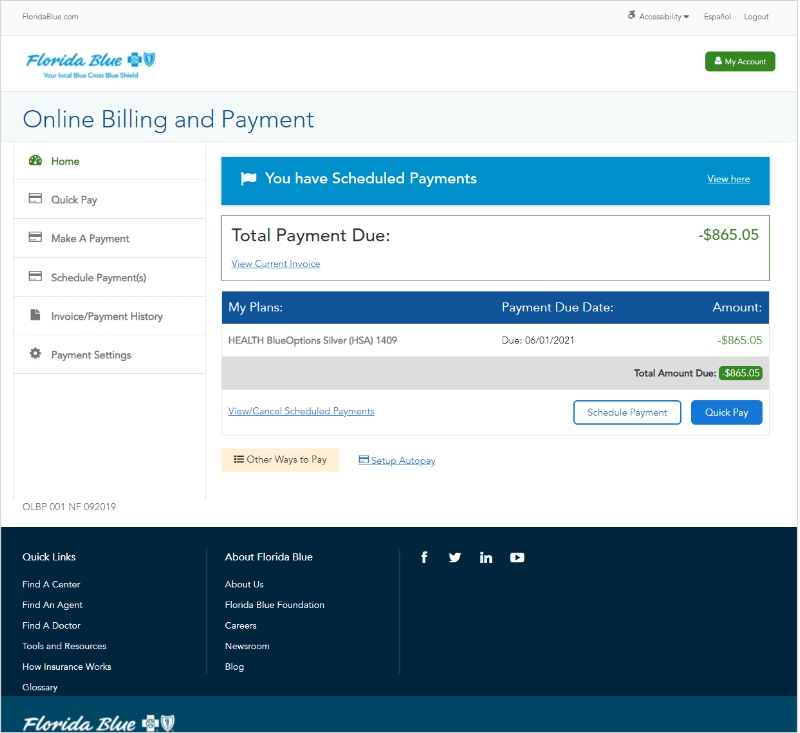
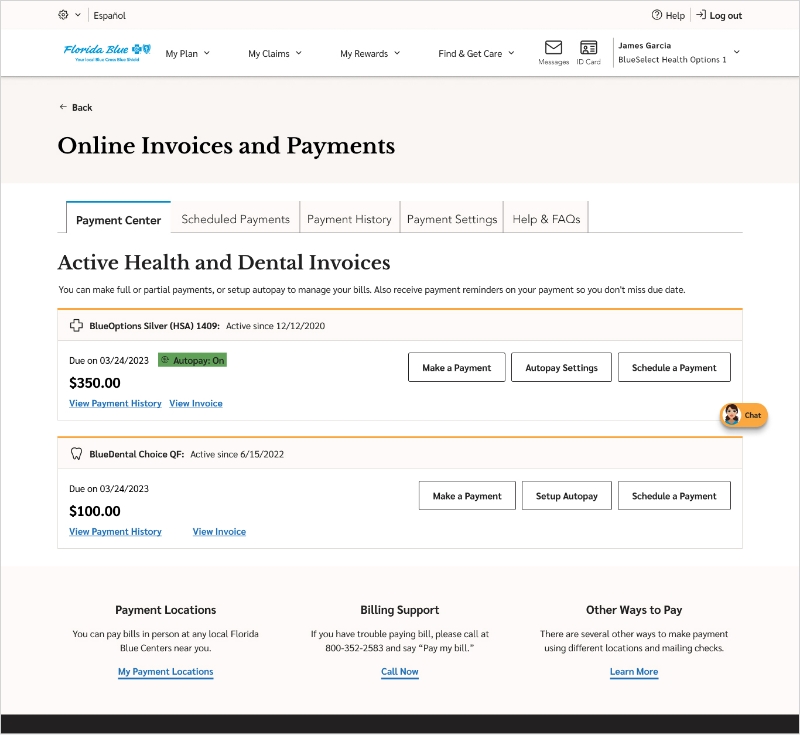
Concept and ideation summary
I led cross-functional brainstorming and working sessions to align stakeholders on the project vision and goals, then conducted competitive benchmarking to see how other companies tackle similar payment challenges. After consolidating all research insights into clear design requirements, I organized whiteboarding workshops to develop and refine low- and mid-fidelity wireframes. Finally, I presented multiple prototype options to the team, gathered feedback, and helped choose the optimal design approach.
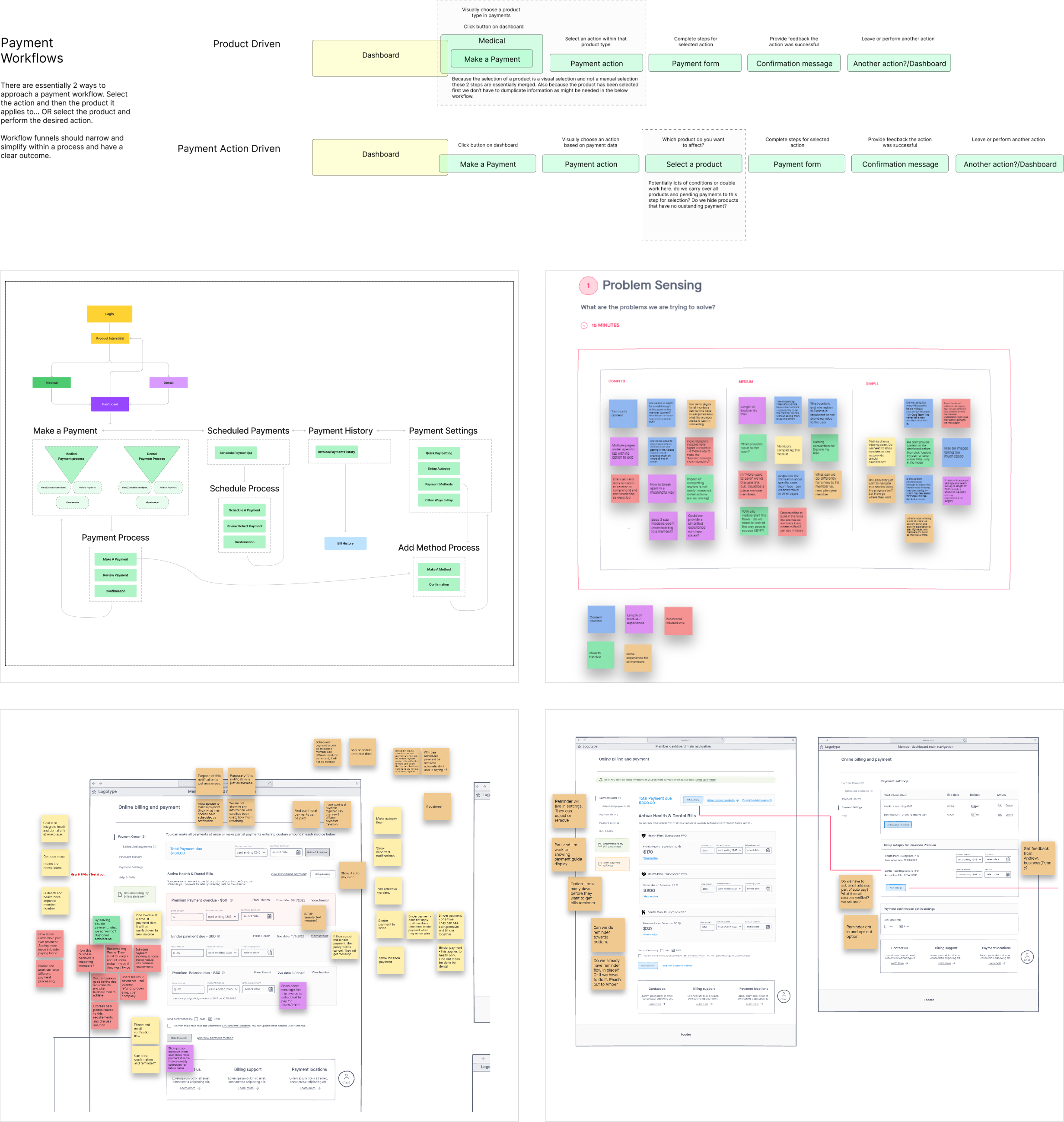
Testing summary
Planned Methodology:
Moderated, unmoderated, and A/B testing.
Participants type:
Diverse in age, ethnicity, insurance carrier, and background.
Participants count:
116 - unmoderated testing, 35 - moderated testing (50% U65 aged & 50% Medicare aged)
Research artifacts:
Figma prototype, UserZoom audio & screen recordings
Success rate:
Version: A - 89% success rate, Version B - 82% Success rate, Combined Version - 94% Success rate.
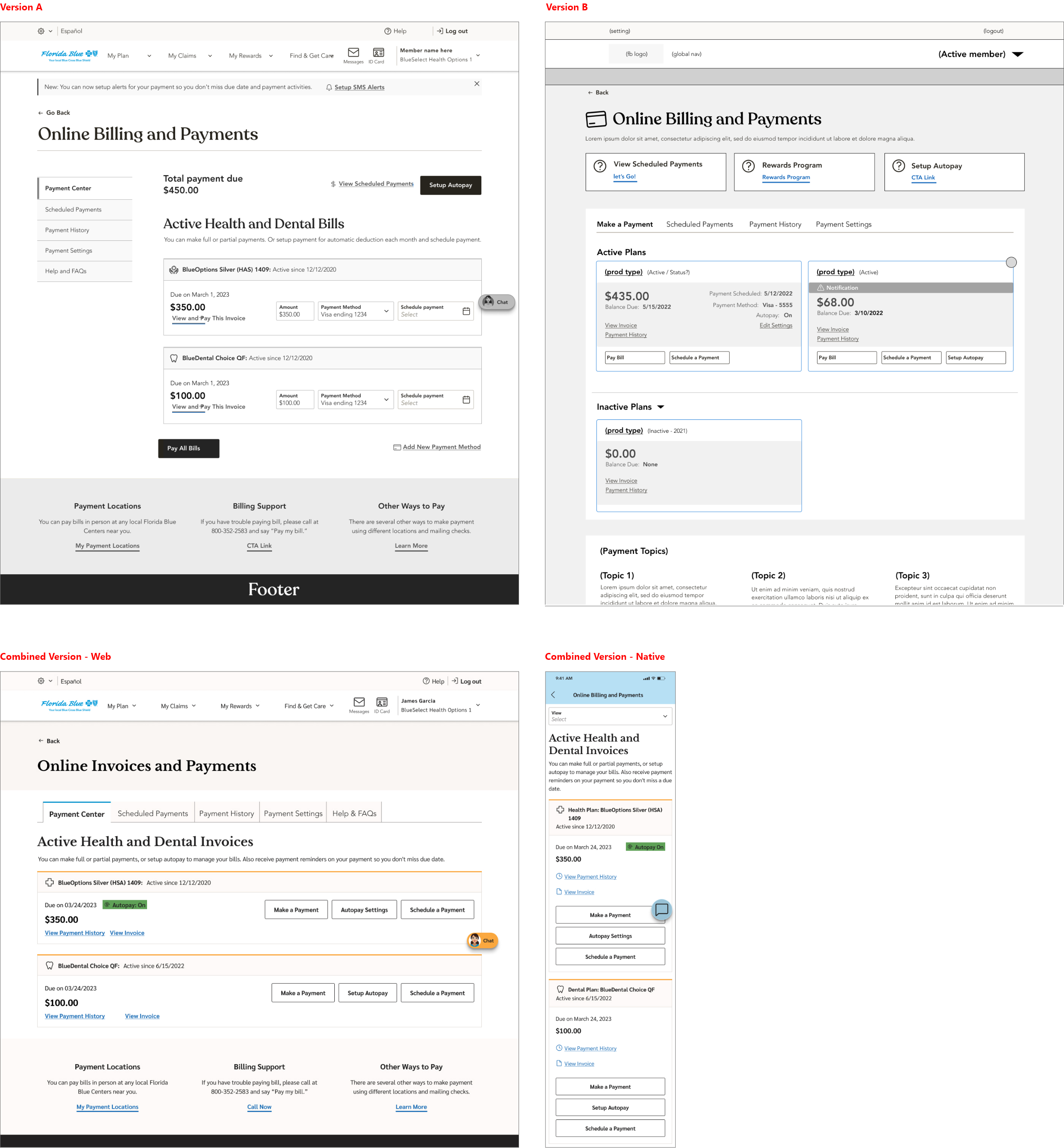
Test findings

Takeaways
User-Centered Simplicity Wins:
A single, unified login and checkout flow eliminated confusion, drove self-service adoption to over 70%, and significantly reduced support calls.
Cross-Functional Collaboration Is Crucial:
Workshops with product, engineering, billing ops, and research ensured alignment on requirements, technical constraints, and compliance, accelerating buy-in and reducing rework.
Metrics-Driven Iteration Fueled by Usability Testing:
Regular moderated and unmoderated tests provided concrete insights, identifying pain points early, validating design changes against FCR and NPS goals.
Mobile Performance Matters:
Optimizing load times and streamlining the mobile UI proved essential for busy members on the go, driving higher completion rates and better satisfaction scores.
Early & Frequent Testing Pays Off:
Ongoing usability studies caught critical issues before launch, saving time and budget on post-release fixes.
Take your project further with human-centered design. I can help, email me at: craftedbyux@gmail.com